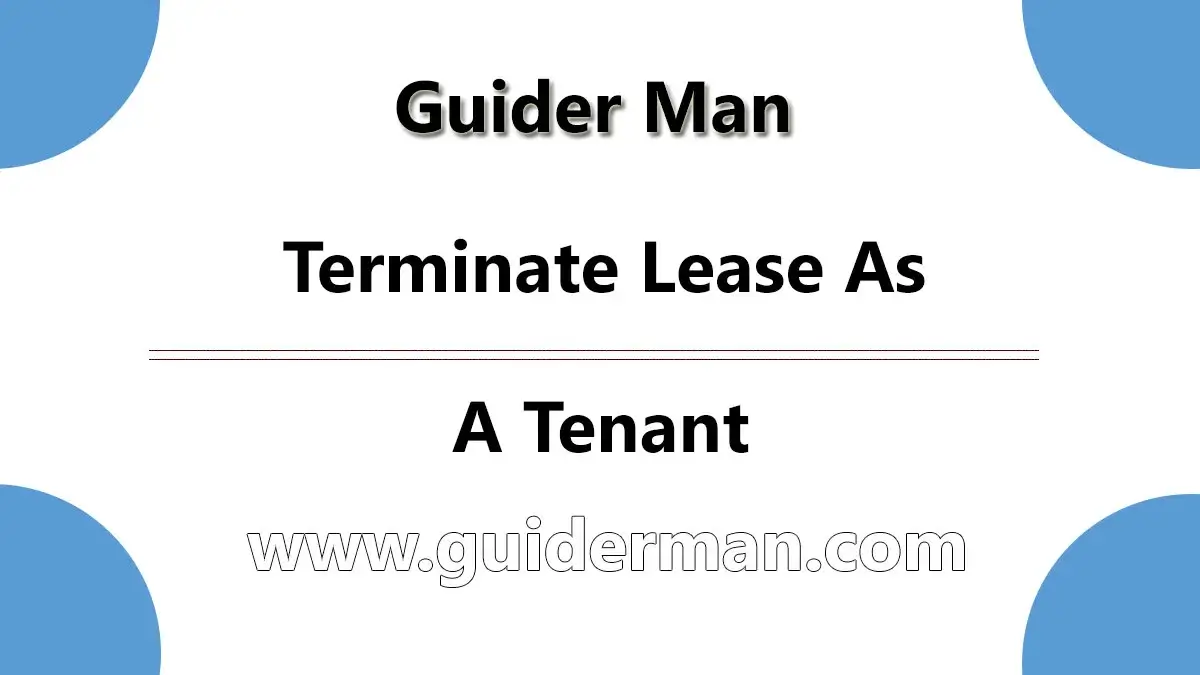There are many different reasons why you, a tenant, would want to terminate your lease. Maybe you’ve chosen to move in with a friend, need more space, or you got a new job and have to relocate. Whatever the reason, in order to terminate your lease, you must tell your landlord by written notice. Most of the time, this notice has to be given to your landlord at least 30 days before you move out. Below are some tips on how to terminate your lease as a tenant.
What is a 30-day Notice?
A 30-day notice is the written disclosure that you give your landlord, informing them that you will be moving out. This document is otherwise known as a notice to vacate or a nonrenewal notice.
Your landlord usually needs at least 30 days to look for a new tenant or assess the condition of the property to see if they should schedule repairs or renovations. During this period, you may have to allow your landlord to show the property to potential renters.
There is no official, standardized document that you are required to use when issuing your notice to vacate, but it must be written so you and your landlord have evidence of your move-out conditions. You should make sure that your landlord doesn’t have a preferred 30-day notice to landlord form before making your own.
Checklist for Terminating Your Lease
It can be helpful to have some guidance during your move-out period so that you can be sure you’re terminating your lease in the smoothest way possible and issuing your 30-day notice letter properly. Below is a checklist for giving termination notice to your landlord.
Step 1: Choose When to move out
Commonly, tenants move out on the last day of their lease, but you can move out a few days earlier if that works best for you. If you choose to leave more than 30 days before the end of your lease, you may be charged an early termination fee. To avoid this and to clarify what rules your landlord has regarding this issue, check your rental agreement or have a conversation with your landlord.
Once you’ve decided on your move-out date, determine what 30 days before that date is and keep in mind that you must file your notice before then.
Step 2: Check Your Lease
It’s possible that your landlord requires more than 30 days notice to landlord form, so when you start to think about moving to a new property, check your lease or talk to your landlord. Sometimes, you could be asked to send 45- or 60-day notice.
It’s a good idea to check your lease anyway, since there is information in that document regarding move-out procedures and lease termination requirements.
Step 3: Write Your Notice to Vacate
When writing your notice, include the following:
Today’s date
- You and your landlord’s name and address
- Written intention to terminate the lease and vacate the property
Move-out date
- Verification that you are providing this notice at least 30 days notice letter before you move out
- Your new mailing/forwarding address so your landlord can send your security deposit to you following move-out
Your phone number and email address
The date by which your landlord must send you your deposit as determined in state law or your lease agreement
Your signature
Make two copies of this document and keep one for yourself before sending the other off to your landlord via email or by handing it to them in person.
Step 4: Pay Last Month’s Rent
Make sure you pay rent for the last month you live in the unit. This amount could be the full rent amount or a prorated amount based on how long you reside in the property that month. Check your lease or ask your landlord whether your last month’s rent will be prorated.
Step 5: Forward Your New Address ASAP
Send your new address to your landlord as soon as you know it so they can send you your security deposit. This is crucial since some states allow landlords to keep a tenant’s deposit if they don’t have your new mailing address within a certain number of days.
Conclusion
Terminating your lease can seem stressful, but it’s a necessity when moving somewhere new. With the guide above, leaving your old unit and moving on will be stress-free. Make sure you’re in communication with your landlord about completing all required move-out procedures, and re-read your lease as needed.
| Guider Man Homepage | Check Here |
